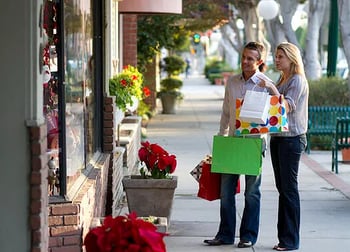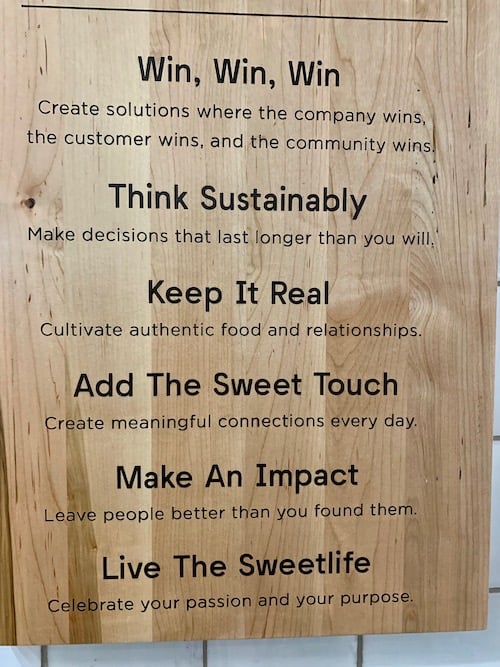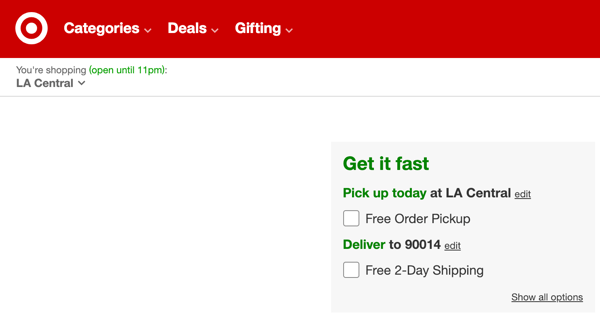How To Be Here Next Year: 5 Steps Retailers Need To Embrace To Compete With Online

Many retailers have embraced digital as the be-all and end-all. Many pundits and retail experts are telling us the only way to survive is to bring the web into your store. But what I’m telling you is you need to leverage the physical store.
Yes, a lot of retail brands are looking to go direct-to-consumer, maybe even some of the brands you already carry.
But here’s the rub: After taxes, shipping fees, returns and customer acquisition costs, those online brands are operating at under a 10% margin.
Instead of selling one to the many through a store, they have to sell one-to-one.
Last year online furniture retailer Wayfair reported it spent $196 each on its 3.6 million new customers in 2018 - all that to acquire low-margin business.
That is not sustainable.
An AlixPartners survey for CNBC noted recently that the customer acquisition costs for online retailing also makes distribution costs four times higher than in-store methods.
That means...
Clicking is much more expensive for a retailer than visiting a store.
Brick and mortar stores are the billboard to a brand and the embodiment of what that brand stands for. Properly executed, stores have lower customer acquisition costs and scales; the busier the store is, the less it costs per transaction.
While you do need to have an online strategy that connects your physical store to your online store so that you can be wherever your shopper is to fulfill their desire for a product, you can’t allow your stores to get the short shift.
Here are 5 steps retailers need to embrace to compete with online:
Have a store philosophy with guiding principles and post it for all to see. To be a stand-out retailer in 2019, you have to create a branded shopping experience. That starts with an essential DNA of how you and your leadership look at what you give your community and employees.
You must put it in concise words so that your philosophy will be embodied by the service your shoppers receive. Many retailers are crying about how hard it is to get good employees.
That’s because today’s Millennials in particular don’t just want a job, they want to work for a brand that is doing more for their community rather than just making money for themselves.

Startup retailers and restaurants are leading with what they stand for to attract both employees and shoppers. This Sweet Greens location in downtown Los Angeles is typical for not only having a purpose, but their posting of it in clear sight of everyone.
Operational Excellence. Many retailers say they love their customers or brag about customer service. I say BS. I’ve been to some of the toniest of luxury retailers and the newest retail concepts, and they all cry out for a branded experience for the shopper. Leaving your shopper alone to browse is not a strategy.
Having a training director or a director of customer experience means nothing if a shopper does not consistently have the same buying process whether they are in one department or another, at two different locations, or with two different salespeople. The war against Amazon will only be won by those retailers who can execute on the salesfloor day in and day out.
Pay people accordingly. Currently Seattle and some other larger cities have $13 per hour minimum wage. I hear retailers say they have to cut labor due to those increases – and a lot of retail gurus are saying the answer is more automation. But what I’m telling you the exact opposite. The only hope for your store is human engagement.
When you have that, you can sell more products at higher margins than the online bandits. To get that, you have to pay for the talent that is trainable, can think on their feet, and make someone else’s day. Consider it part of your customer acquisition costs if that helps but make no mistake, you are leaving millions on the salesfloor if you settle for kiosks and computers rather than trained associates.
Use your online site to get customers to your physical store. 2018 was the year we stopped saying the store was dead. The smart retailers looked at their physical stores as an asset. Even digital native brands like Warby Parker and Glossier opened stores, and let’s not forget Amazon’s purchase of Whole Foods and their predicted spread of Amazon Go stores.
Why?
Because stores are incubators of taste and trend. Without that critical mass of information, you’re just another online retailer selling stuff you think is great. Physical stores validate that. With that understanding you realize that driving the consumer to the store opens choices.
This year Target is highlighting a message screen that shoppers see each time they go to order an item. The message boldly tells them that this item is available for immediate pickup at their local store. That option not only appeals to many shoppers’ desire to get it faster, but it reduces shipping costs and gives the retailer a chance to sell that customer more products when they walk through the store. A reported 40% of BOPIS shoppers buy additional items in the store. That simply doesn’t happen online.
There’s only one metric that matters. Popup shops, kiosks, events, Instagram posts, again most retail experts are telling you these are all great at building brand awareness and getting people to talk about you. But I’m here to tell you no matter what the shiny object, there’s only one metric as old as time that matters – are you selling the merchandise.
None of those matter if you can’t sell enough merchandise at a high enough margin to pay your suppliers and associates and make enough profit to expand or continue.
To compete in 2019, you need to spend time with hiring, training, and analyzing their performance on the floor – did the shopper buy more from your brand as a result of the interaction with your associate or did they buy less.
A ruthless attention to operational excellence will show where the weakness is and it often is in believing your store experience is better than the other guys'. Once you have operational excellence and proven sales, you can use all the advertising, social media and the rest to get more shoppers into your store.
See also, To Compete With Amazon Try This In Your Store Instead Of Coupons Or Discounts
In Sum
We are coming off a strong holiday season but analysts are worried that in the drive to compete with online retailers like Amazon, retailers sacrificed margins. And the boasting of higher online sales will mean higher return rates that will hit the bottom line well into Q1.
I’m off to the National Retail Federation’s Big Show next week where we’ll hear about the need to innovate. I have news for you, innovation is hard to do over and over again. It often becomes a distraction to chase the next thing while leaving the shopper who was willing to leave her house, drive through traffic, and find a parking spot to enter your store all alone.
It wasn’t that long ago we were being told that check-ins were the marketing program to embrace. Next it was that beacons were going to be leading customers through the store to interrupt them like Tom Cruz character in Minority Report.
Don’t get me wrong, analytics that can help tell a retailer where consumers are, where they’ve been, and can predict where they’re headed next can be valuable.
But while it is good to add tools to do even better with your goals to sell more product, I’m telling you the answer to higher sales is right in front of you on your salesfloor.
With a stated shared purpose and a ruthless focus on operational excellence, with paying associates for their engagement skills, embracing and touting your physical store presence, and focusing on the bottom line of selling more products as a result - you will be positioned to be here next year.
Looking for how to get your share of retail sales this year? Click the button below to convert more lookers into buyers.


